
HOME
INTRO
SYMBOLS
ALMANAC
ECONOMY
GEOGRAPHY
STATE MAPS
PEOPLE
FORUM
NEWS
COOL SCHOOLS
STATE QUIZ
STATE LINKS
BOOK STORE
MARKETPLACE
NETSTATE.STORE
NETSTATE.MALL
GUESTBOOK
CONTACT US


Tweet
Double click on word for definition.
North Carolina State Fossil
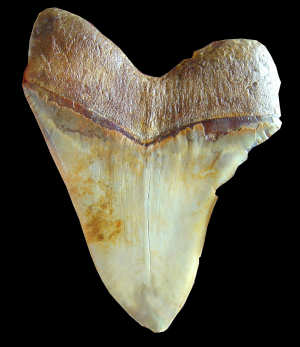
North Carolina State Fossil: Fossilized Teeth of Megalodon Shark
Photograph: (User:TomCatX) Wikimedia Commons (Original)
The fossilized teeth of the megalodon shark became the official state fossil of the State or North Carolina when Governor Pat McCrory signed mega-symbol House Bill No. 830 on June 26, 2013.
The five other symbols made official by mega-symbol House Bill No. 830 included:
- Official frog of the State of North Carolina
- Official salamander of the State of North Carolina
- Official marsupial of the State of North Carolina
- Official folk art of the State of North Carolina
- Official art medium of the State of North Carolina
GENERAL ASSEMBLY OF NORTH CAROLINA
SESSION 2013SESSION LAW 2013-189
HOUSE BILL 830AN ACT to adopt an official state fossil, frog, Salamander, marsupial, folk art, and art medium.
Whereas, some of North Carolina's official State symbols have been suggested by the State's school children after they have had history, science, social studies, or geography lessons related to North Carolina; and
Whereas, this year some of the suggestions range from the adoption of an official fossil to an official frog; and
Whereas, the State of North Carolina has a number of unique official symbols but does not have an official fossil, frog, salamander, marsupial, folk art, or art medium; and
Whereas, the megalodon shark is an extinct shark species that lived over 1.5 million years ago; and
Whereas, the megalodon shark may have reached over 40 feet in length and weighed up to 100 tons; and
Whereas, the megalodon shark had serrated, heart-shaped teeth that may have grown to over seven inches in length; and
Whereas, fossilized teeth of the megalodon shark have been found in North Carolina and throughout the world; and
Whereas, North Carolina and the Southeast region of the United States lead the world in amphibian diversity; and
Whereas, the pine barrens tree frog can be found in the Sandhills and Coastal Plain regions of North Carolina; and
Whereas, the pine barrens tree frog has been considered one of the most striking and beautiful frogs in the Southeast region of the United States; and
Whereas, the pine barrens tree frog by name reflects one of North Carolina's signature trees and ecosystems that have been a vital part of the State's economic, cultural, and natural history since colonial times; and
Whereas, North Carolina also leads the nation and world in salamander diversity, most notably in our Appalachian Mountains; and
Whereas, the marbled salamander is found throughout the State and is unique in that it is a charismatic, striking, chunky-bodied, fossorial amphibian, of which no two are exactly alike in color pattern; and
Whereas, according the North Carolina Wildlife Commission's 2005 North Carolina Wildlife Action Plan, the pine barrens tree frog and the marbled salamander have been identified as priority species for population monitoring and conservation in North Carolina; and
Whereas, the Virginia opossum is native to North Carolina and is the only marsupial found in North America; the female carries its underdeveloped young in a pouch until they are capable of living independently, similar to a kangaroo; and
Whereas, the Virginia opossum is one of the oldest and most primitive species of mammal found in North America; and
Whereas, the Virginia opossum is about the size of a large house cat with a triangular head; a long pointed nose; dark eyes; a long, scaly, prehensile tail; and short, black, leathery ears; and
Whereas, the Virginia opossum is nocturnal and lives in a wide variety of habitats, including deciduous forests, open woods, and farmland but prefers wet areas such as marshes, swamps, and streams; and
Whereas, at age 65, Vollis Simpson, a self-taught folk artist, began making giant windmills known as "whirligigs" at his home in Wilson, North Carolina; and
Whereas, Mr. Simpson's whirligigs have been exhibited at the North Carolina Museum of Art in Raleigh, the High Museum of Art in Atlanta, Georgia, and the Visionary Art Museum in Baltimore, Maryland, and at other locations, including New York, California, Canada, and England; and
Whereas, Mr. Simpson and details of his artwork have been featured in many national magazines and in several books; and
Whereas, the City of Wilson is developing the Vollis Simpson Whirligig Park to display a large collection of these whirligigs in historic downtown, which will be a one‑of‑a‑kind destination for visitors; and
Whereas, North Carolina's clay-rich soil has contributed to the State's pottery heritage; and
Whereas, the use of clay has grown from the State's early Native Americans making mostly utilitarian wares and European settlers continuing the traditions of their ancestors to today's potters designing pottery with utilitarian and aesthetic elements; and
Whereas, the pottery tradition continues to thrive in North Carolina, especially in the Seagrove area, which includes parts of Chatham, Lee, Moore, Montgomery, and Randolph Counties; and
Whereas, clay continues to be an important art medium contributing to the State's cultural, social, and economic prosperity; Now, therefore,
The General Assembly of North Carolina enacts:
SECTION 1. Chapter 145 of the General Statutes is amended by adding the following new sections to read:
§ 145-41. State fossil.
The fossilized teeth of the megalodon shark is adopted as the official fossil of the State of North Carolina.
"§ 145-42. State frog.
The pine barrens tree frog (Hyla andersonii) is adopted as the official frog of the State of North Carolina.
"§ 145-43. State salamander.
The marbled salamander (Ambystoma opacum) is adopted as the official salamander of the State of North Carolina.
"§ 145-44. State marsupial.
The Virginia opossum (Didelphis virginiana) is adopted as the official marsupial of the State of North Carolina.
"§ 145-45. State folk art.
The whirligigs created by Vollis Simpson are adopted as the official folk art of the State of North Carolina.
"§ 145-46. State art medium.
Clay is adopted as the official art medium of the State of North Carolina."
SECTION 2. This act is effective when it becomes law.
In the General Assembly read three times and ratified this the 20th day of June, 2013.
s/ Philip E. Berger
President Pro Tempore of the Senate
s/ Thom Tillis
Speaker of the House of Representatives
s/ Pat McCrory
GovernorApproved 4:24 p.m. this 26th day of June, 2013
Sources...
Avila, Marilyn, Susan Martin, Pat McElraft, and Roger West. "House Bill 830 / S.L. 2013-189." North Carolina General Assembly. The State of North Carolina, 06 Jun 2013. Web. 20 Jul 2013.
Additional Information
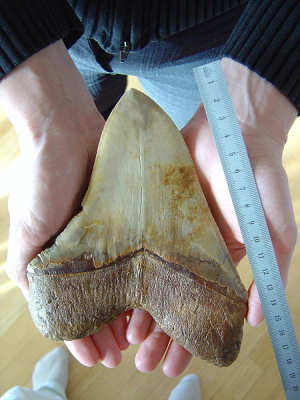
North Carolina State Fossil: Fossilized Teeth of Megalodon Shark
Photograph: (User:TomCatX) Wikimedia Commons (Original)
10 Facts About Megalodon: About.com: Dinosaurs.
Fossil Shark Basics: Florida Museum of Natural History.
Megalodon Facts and Information: Jayson Kowinsky, high school physics and earth science teacher and " interested amateur who wants to invoke curiosity into the wonderful world of geology." He maintains the website www.fossilguy.com.
Megalodon: Largest Shark that Ever Lived: Museum of Art and Sciences - Macon, GA.
State fossils: Complete list of official state fossils from NETSTATE.COM
More symbols & emblems: Complete list of official North Carolina state symbols from NETSTATE.COM.
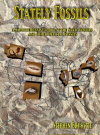
Stately Fossils
Stephen Brusatte
Stately Fossils: A Comprehensive Look at the State Fossils and Other Official Fossils, buy Stephen Brusatte. 234 pages. Publisher: Fossil News (September 2002) The only book in print on the subject of state fossils, Stately Fossils offers an in-depth treatment of the natural and cultural history behind the official fossils of every state... and more! The book contains 80 photos and over 300 references to further information.

Fossils Tell
of Long Ago
Fossils Tell of Long Ago, by Aliki. 32 pages. Publisher: Collins (March 21, 1990) Reading level: Grades Kindergarten - Grade 3. Sometimes it's the imprint of an ancient leaf in a rock. Sometimes it's a woolly mammoth, frozen for thousands of years in the icy ground. Sometimes it's the skeleton of a stegosaurus that has turned to stone.
A fossil is anything that has been preserved, one way or another, that tells about life on Earth. But you can make a fossil, too--something to be discovered a million years from now--and this book will tell you how.

Fossil
Paul Taylor
Fossil (DK Eyewitness Books), by Dr. Paul D. Taylor. 72 pages. Publisher: DK Publishing, Inc. (August 2, 2004) Reading level: Grades 4 - 7. Here is an original and exciting new look at fossils - the remains of long-vanished animals and plants. Stunning real-life photographs of the spectacular remains of ancient lives offer a unique "eyewitness" view of what fossils are, how they were formed, and how they lived millions of years ago. See pearls that are 50 million years old, a dinosaur's toe, a troublesome "snake" that was turned to stone, a fossilized human being, and a snail made of precious stones. Learn how fossils are formed, how trilobites have been preserved for 590 million years, where to look for a belemnite, and how fossils helped the pharaohs of ancient Egypt. Discover which are the most precious fossils in the world, where ammonites lived, how big mammoths were, what a devil's toenail looks like, and much, much more.
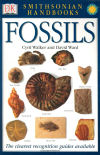
Fossils
Fossils (Smithsonian Handbooks), by Cyril Walker and David Ward. 320 pages. Publisher: DK Publishing, Inc. (May 15, 2002) Authoritative text, crystal-clear photographs, and a systematic approach make DK's Smithsonian Handbook of Fossils the most comprehensive and concise pocket guide to fossils of the world. Packed with more than 1,000 full-color photographs of over 500 fossils, this handbook is designed to cut through the complex process of identification to provide instant species recognitions.
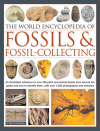
World Encyclopedia of
Fossils & Fossil-Collecting
Steve Parker
World Encyclopedia of Fossils & Fossil-Collecting, by Steve Parker. 256 pages. Publisher: Lorenz Books (December 25, 2007) Fossils can be discovered by anyone, and give us a window onto the amazing history of our planet. Ancient natural forms, from the simplest fungus to giant dinosaurs, can reveal the fascinating development of evolving life.
The main part of the book consists of an extensive directory of fossils, providing a comprehensive visual and factual compendium of more than 375 significant fossil types, ranging from the tiniest algae through mammoths and whales to giant dinosaurs such as Iguanodon - plus the varied types of human. Each and every fossil entry includes a large, full-colour photograph of the fossil itself, accompanied by a detailed factbox and a clear artwork that reconstructs the appearance of the original plant or animal. Additional feature boxes reveal fascinating related stories, such as the fossil discoveries that turned scientific thinking on its head and in-depth studies of specific fossil sites.

